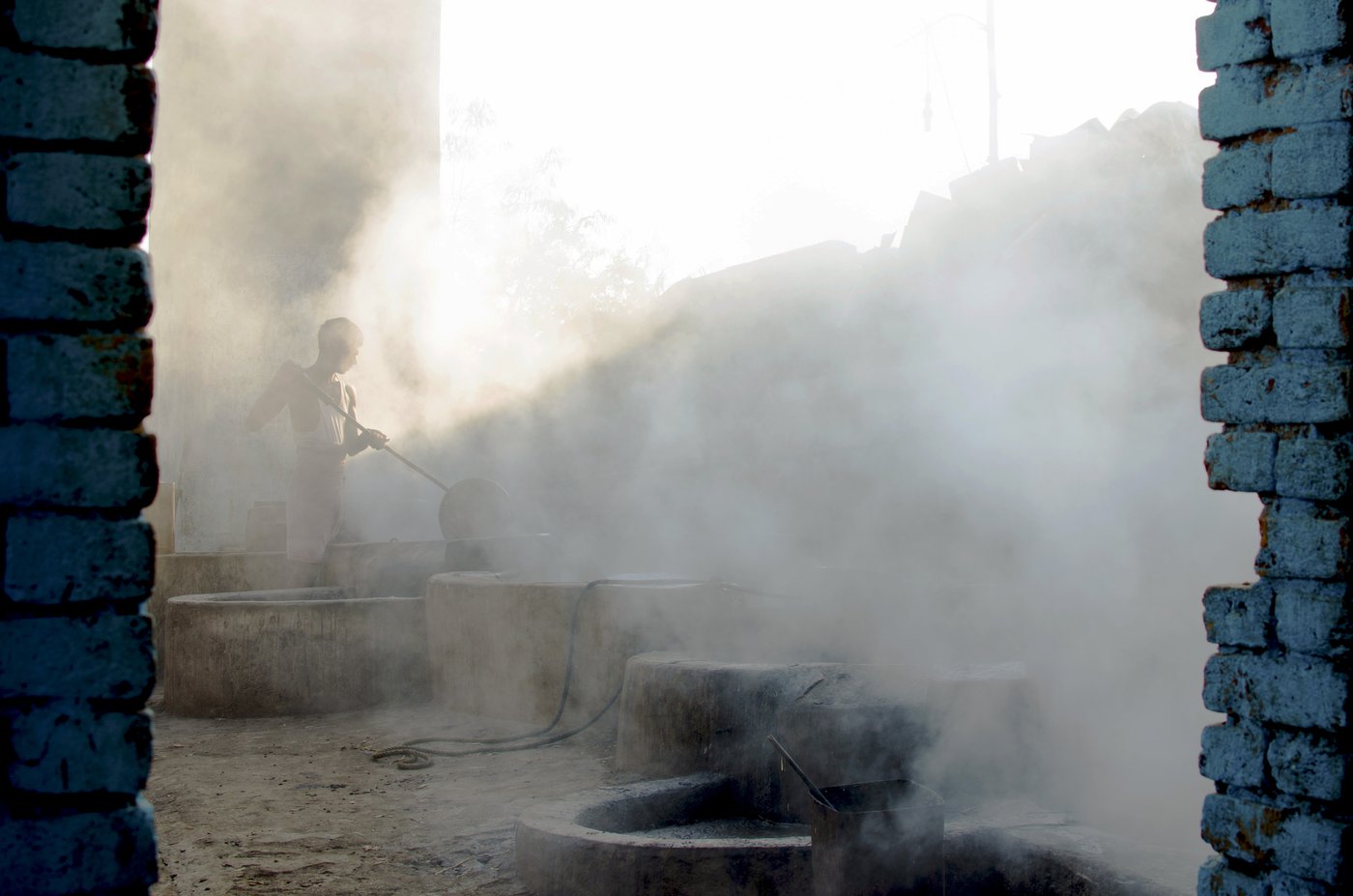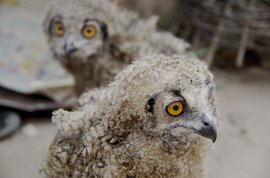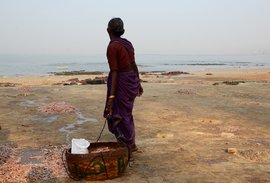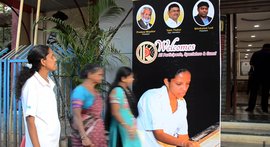“Banka is famous for two things – gur (jaggery) from Amarpur and tussar silk from Katoria,” says Abdul Sattar Ansari, a weaver from Katoria village. Both, he says, are now on the decline.
Ballikita village in Amarpur block is around three kilometres from Katoria. It is not difficult to locate the jaggery mill on its outskirts – the intense smell of caramelised sugarcane serves as a ‘map’.
This mill in Banka district, Bihar, was set up around 40 years ago, says Rajesh Kumar, by his father Sadhu Saran Kapri. It is a small mill, with 12-15 labourers. They earn Rs. 200 for a day’s labour, starting at 10 a.m. and stopping by sunset, around 6 p.m. The mill operates from October to February every year; December and January are the peak season.
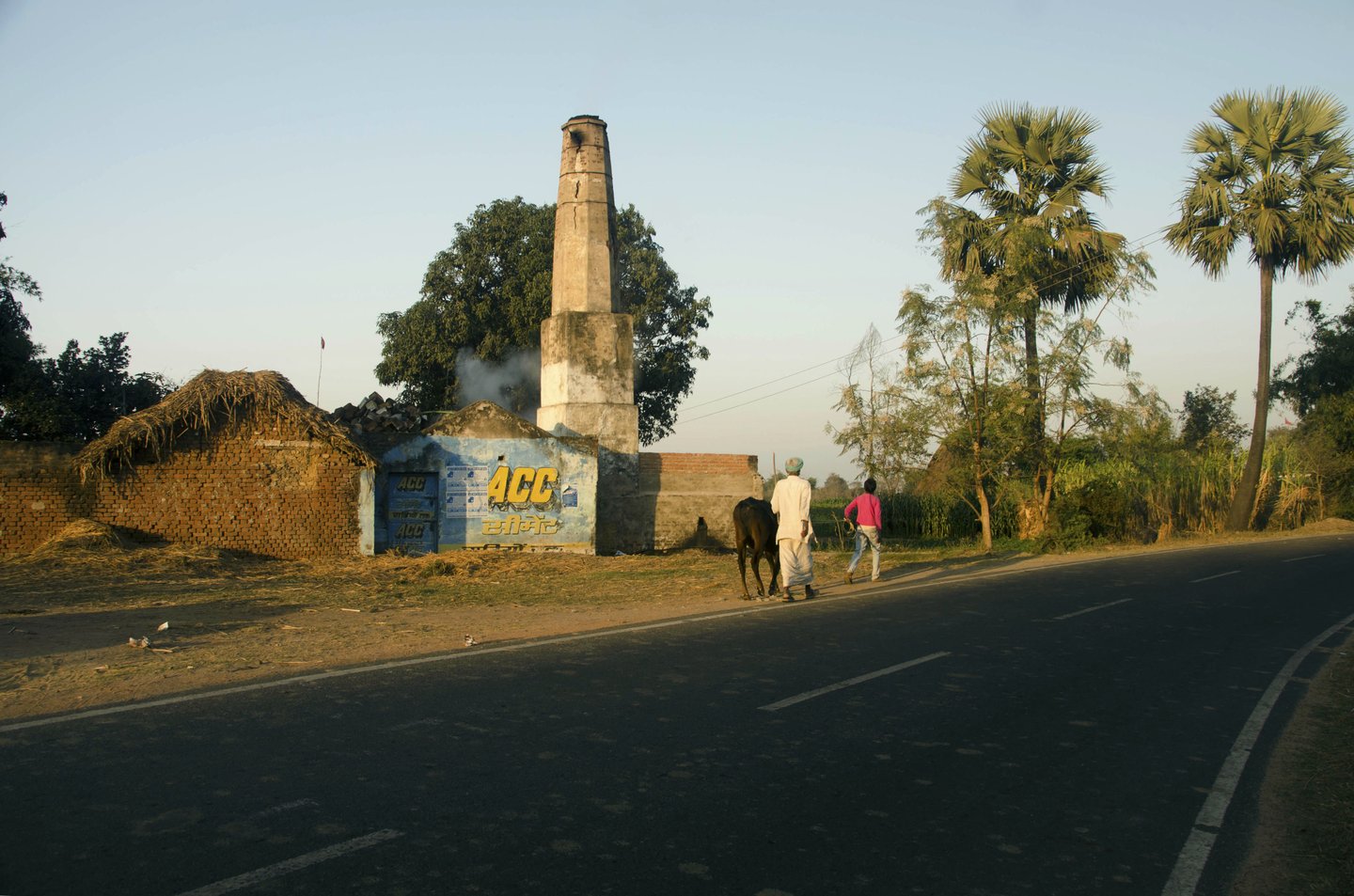
“There are 10-12 jaggery mills in Amarpur, but 15 years ago there were more than 100,” says Rajesh Kumar, the owner of this mill. “Most of the workers here are from neighbouring villages like Ballikita, Baja, Bharko, Baida Chak and Gorgama”
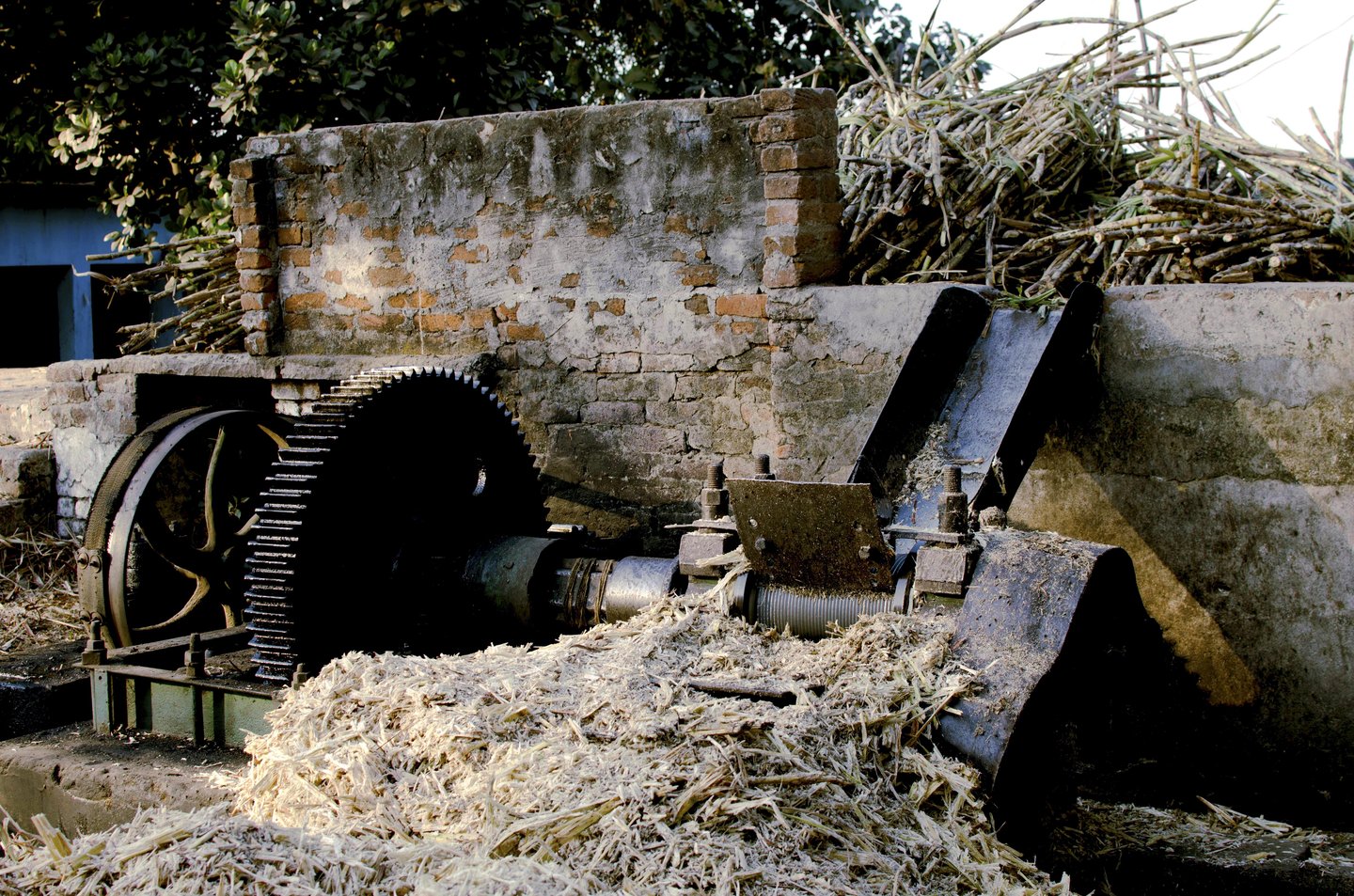
The only sugarcane pressing machine in the mill is shut by 4 p.m., so there is enough time to process all the juice. “This machine is as old as the mill, ” says Kumar. The juice is collected in large underground pits on the other side of the machine
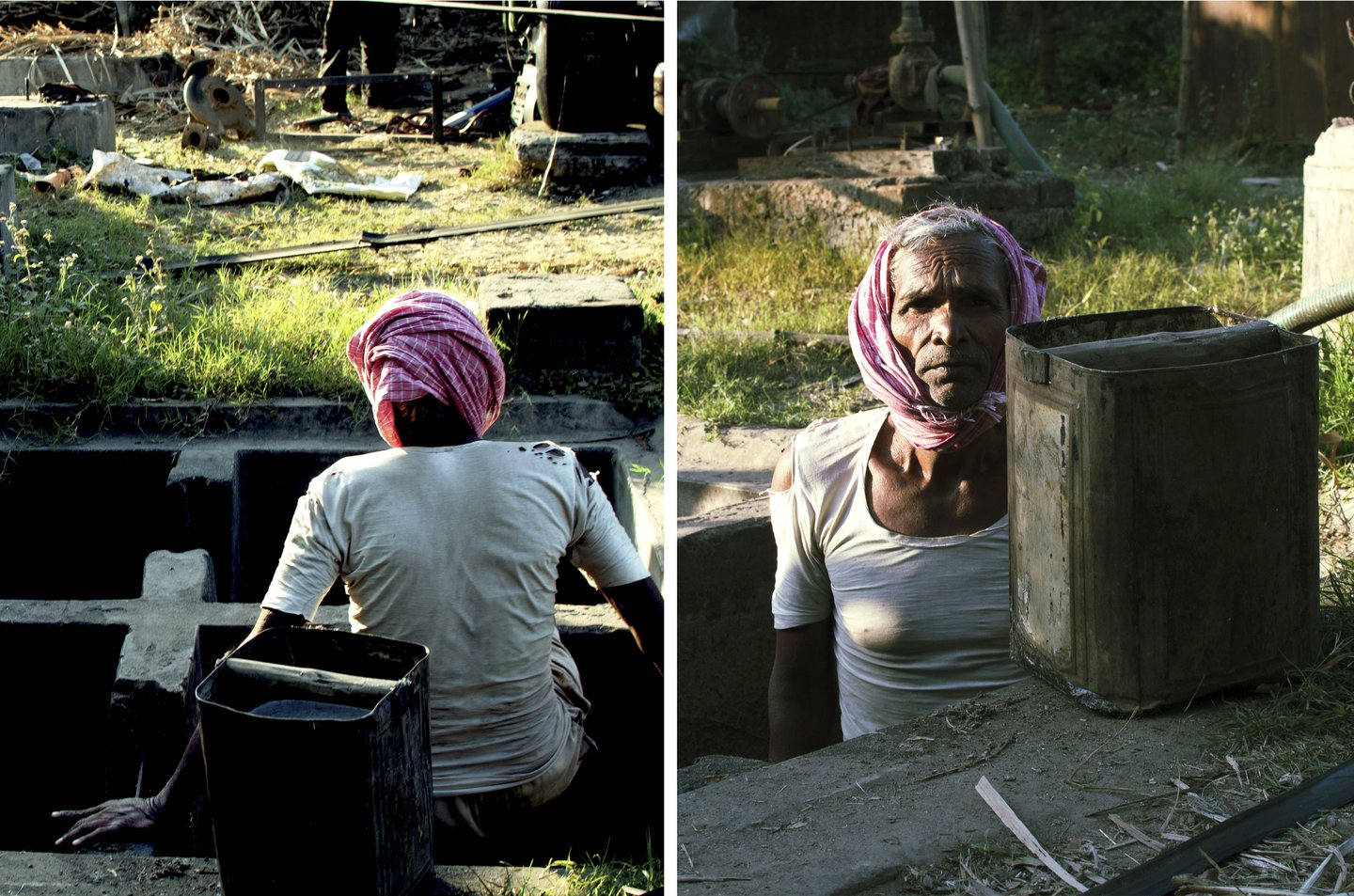
Akshay Lal Mandal, 60 years old, dives into a four-foot deep pit to collect the remains of the sugarcane juice settled at the bottom. He then carries it in tin containers to the boiling pits at the other end of the mill. “I was an ironsmith in Kolkata. I am old now, so I returned to my village and have been working here for three years,” Mandal says. “There are many like me here [of my age, who have returned to their families in the village]”
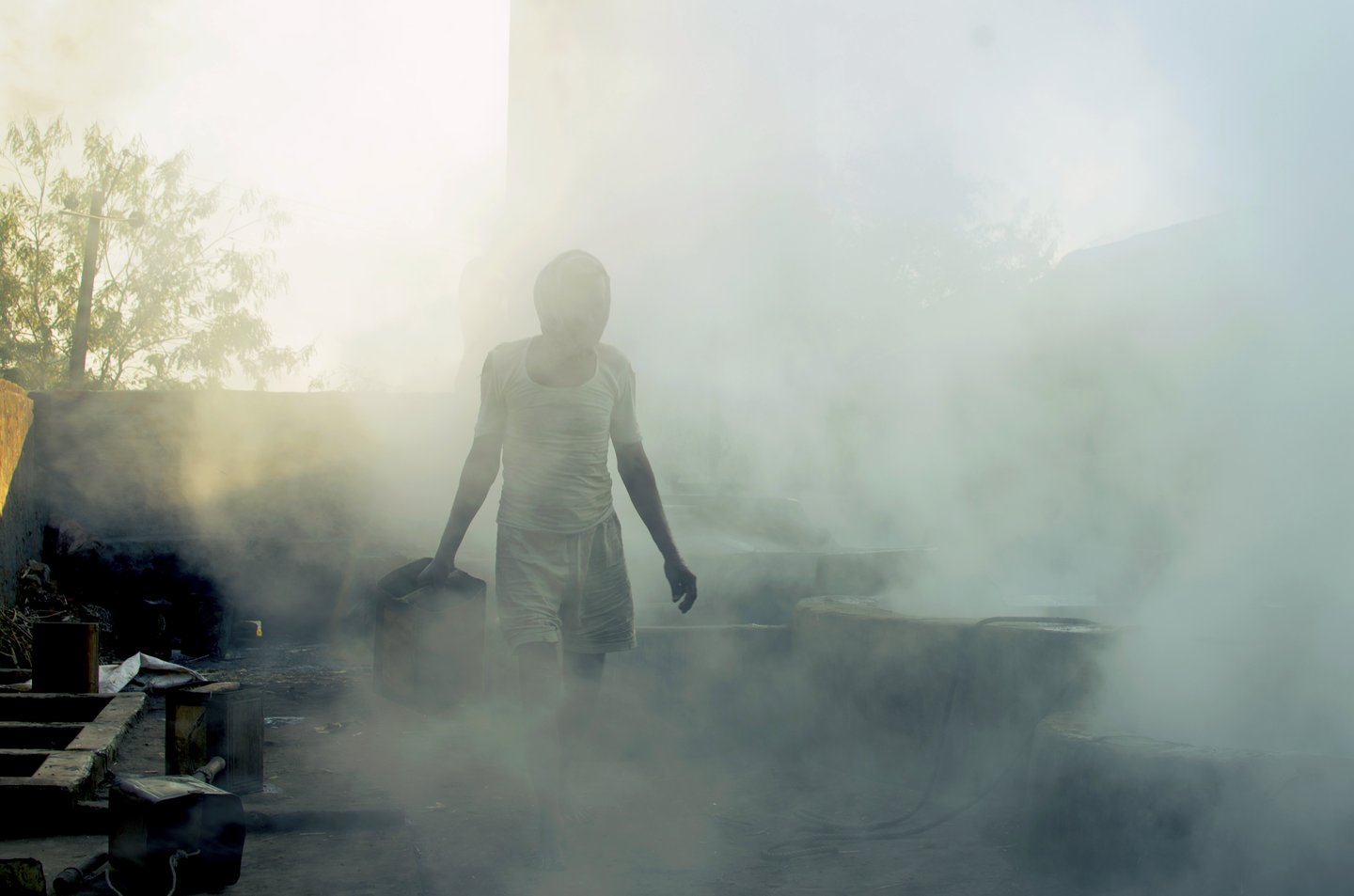
“This was my last trip for the day between the juice pits and the boiling pits,” Mandal says, looking exhausted by now. “We keep shifting tasks. I was unloading sugarcane during the first half of the day today”
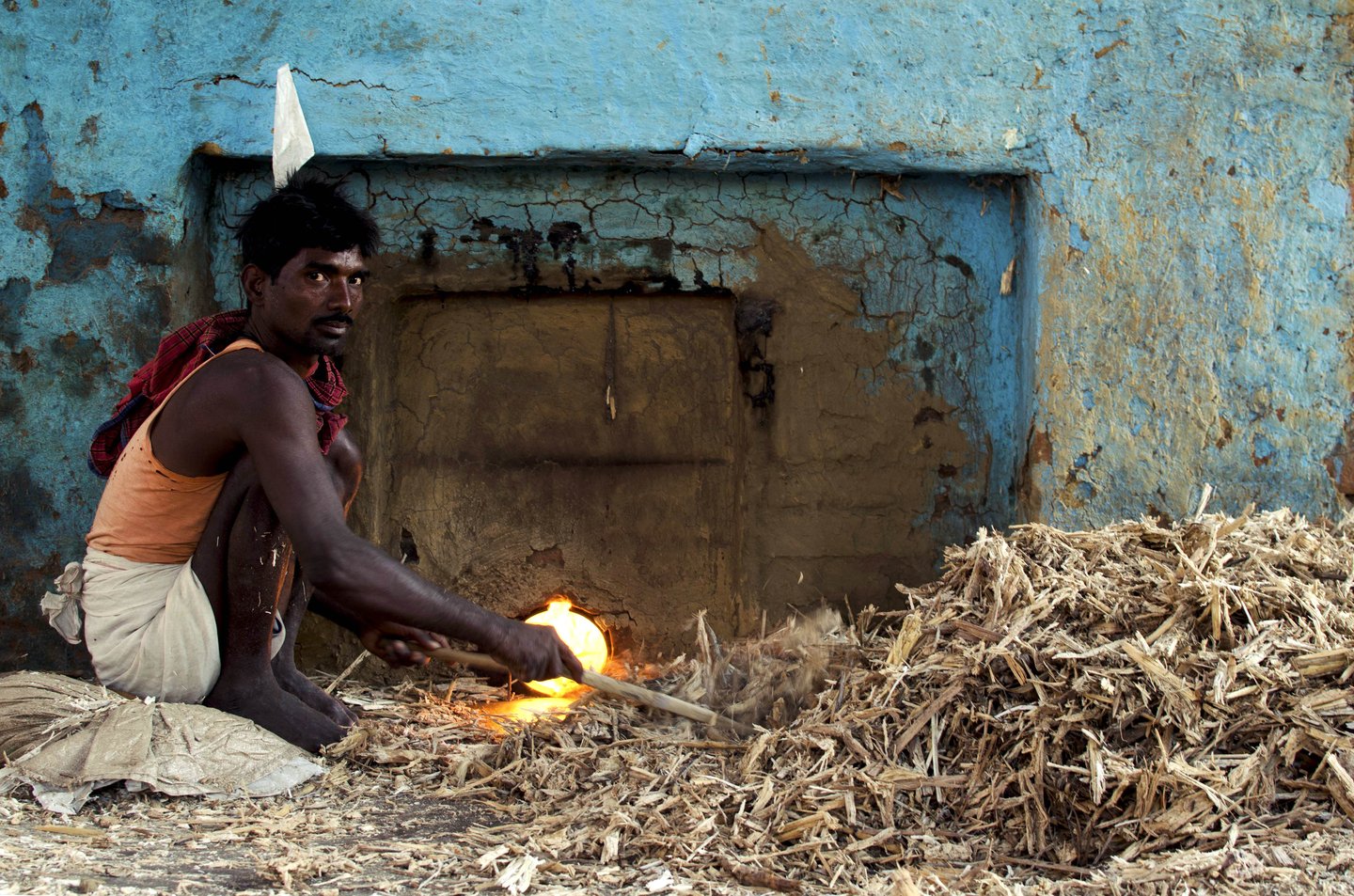
Dry remains of sugarcane are burned to fuel the boiling process. Rajendra Paswan, 45, constantly shoves in the stalks to feed the fire. “The mill owner has his own sugarcane fields,” he says, “that’s why the mill is still running.” The other mills, says Rajesh Kumar, the owner, shut down after it became unprofitable to grow sugarcane locally
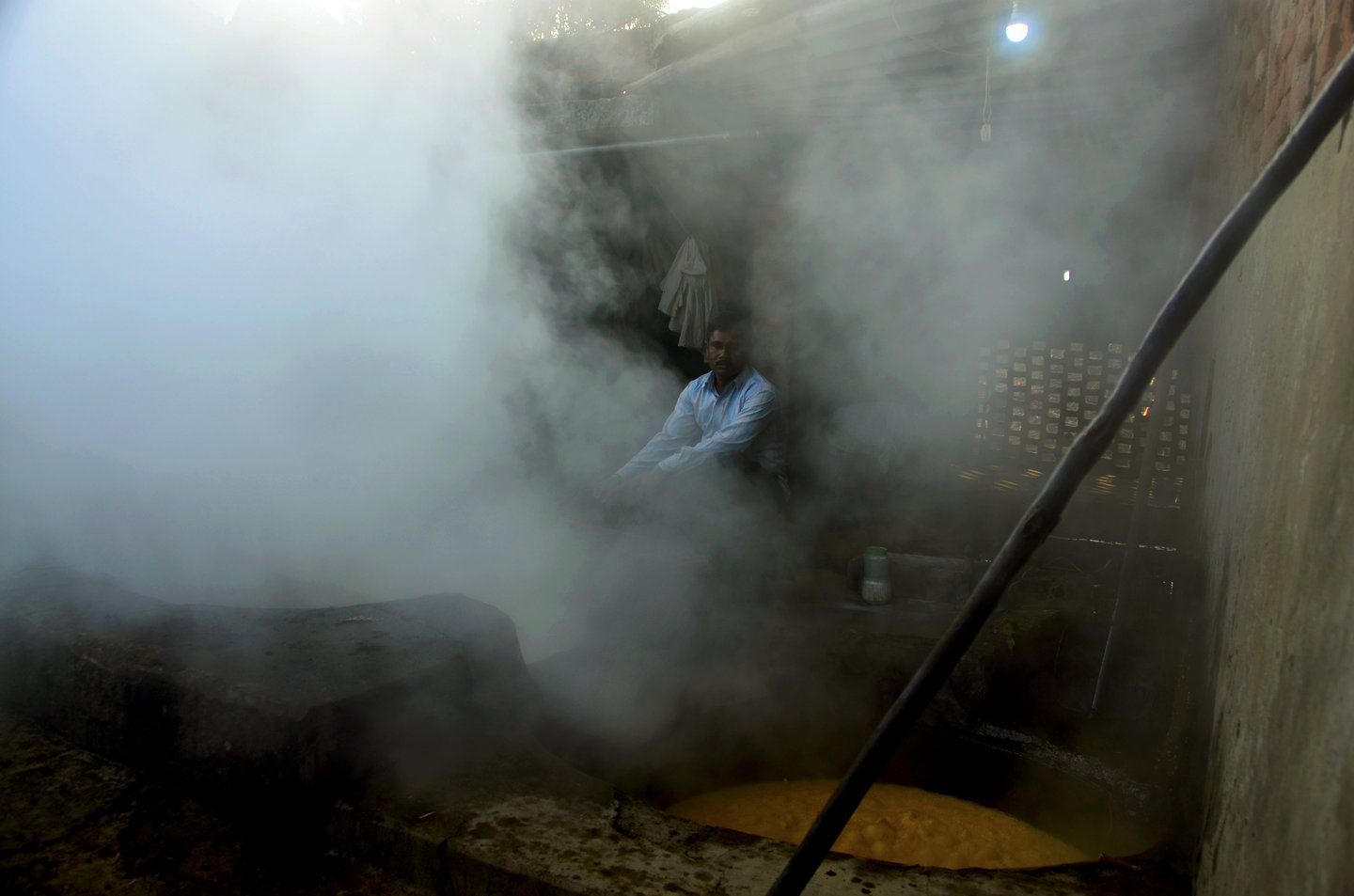
This mill has three boiling pits. The sugarcane juice is first boiled; when it starts caramelising, it is transferred to the second pit. There it is boiled some more and the impurities that float to the surface are removed with a big iron ladle and put into a waste pit adjacent to the main boiling pits. By the time it is transferred to the third pit, the jaggery starts forming
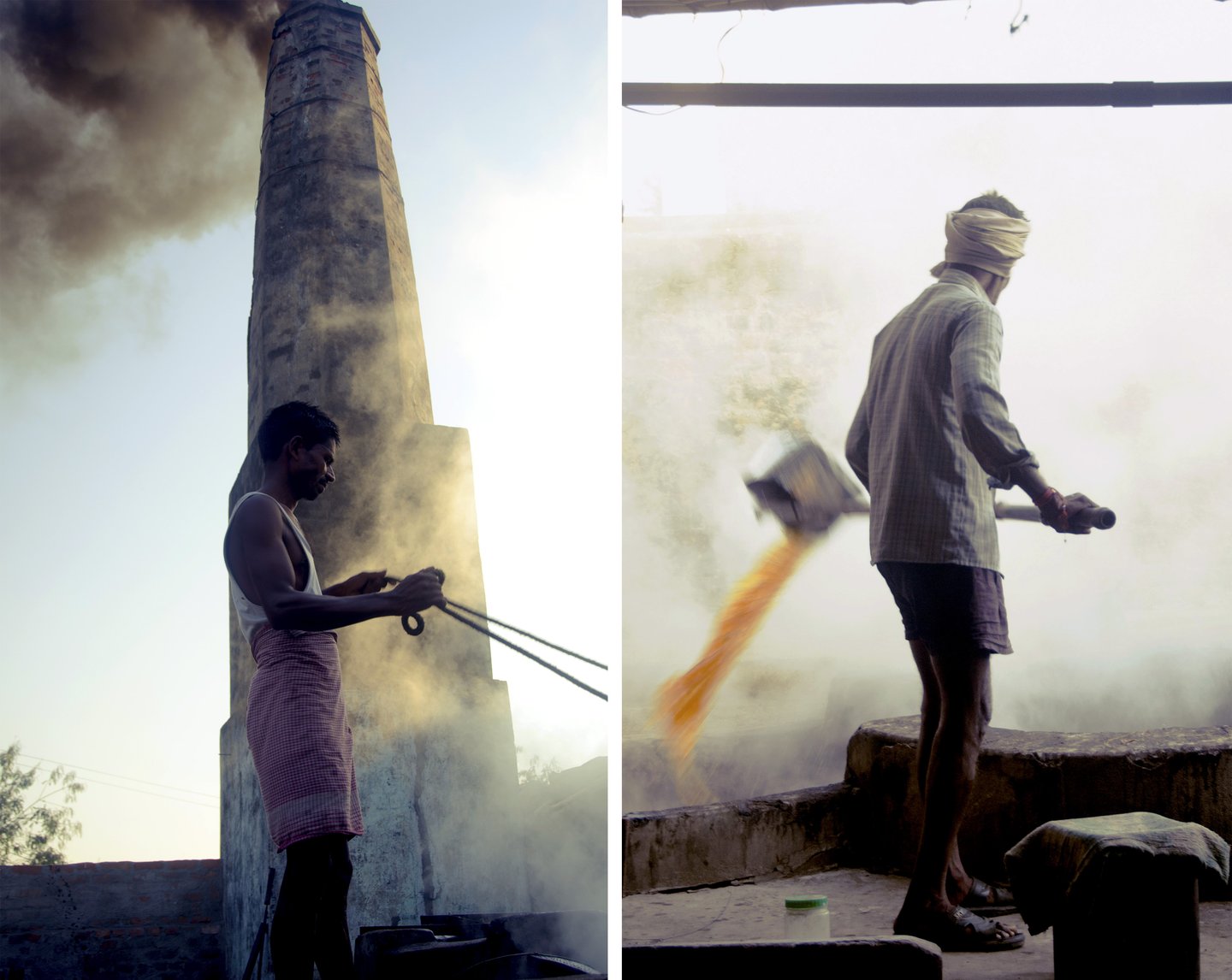
The men transfer the sticky liquid from one pit to the other using metal containers tied to ropes and a wooden rod
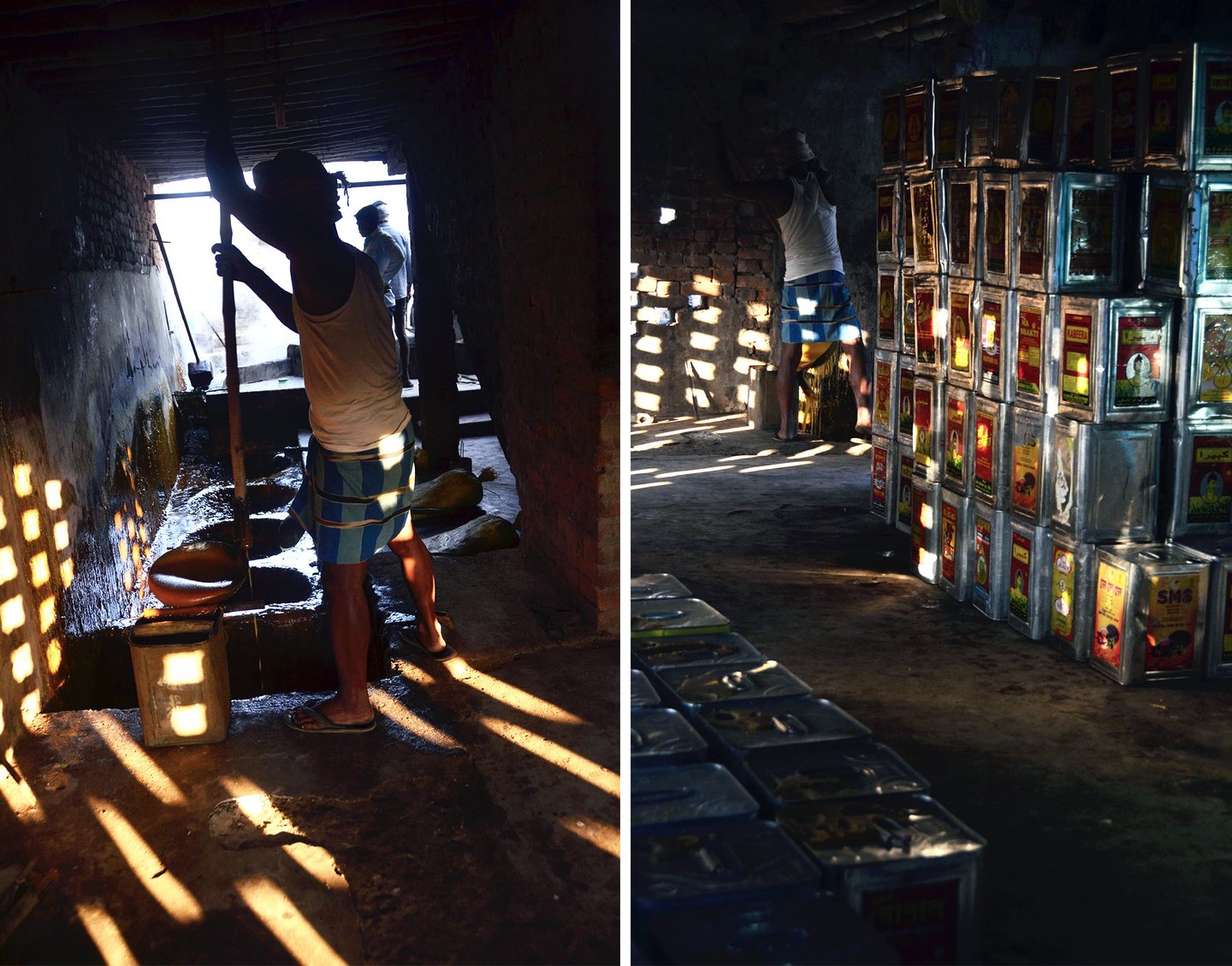
After the final boiling, the solidifying juice is cooled in smaller stone pits. Subodh Poddar (right) pours the liquid golden jaggery into tin containers. “I am a farmer, but the mill owner is from my village [Ballikita] and he asked me to come as there is currently a shortage of labour,” he says
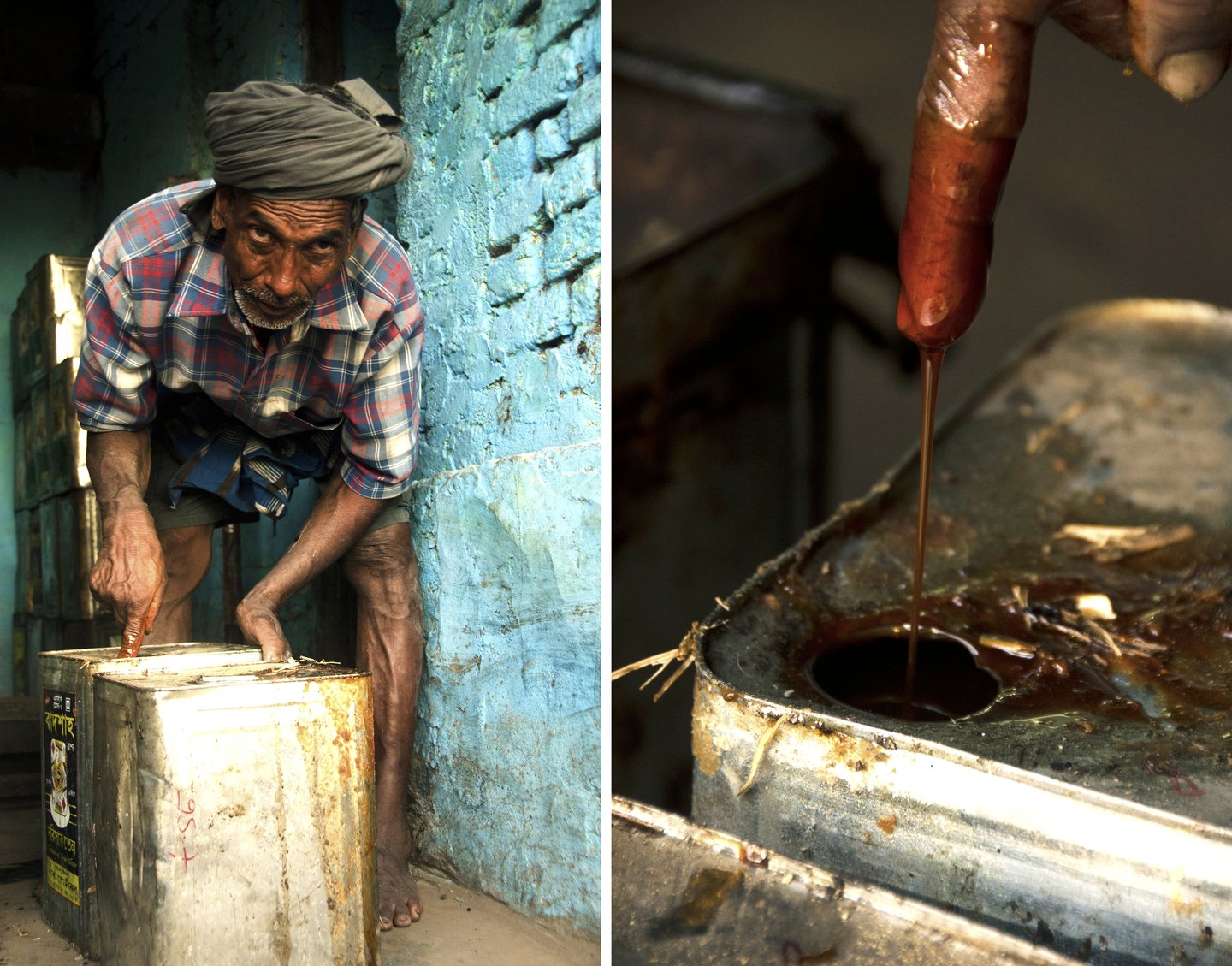
“I am checking the taar ( consistency) after which I will seal the container,” says Ramchandar Yadav; he comes to the mill from Baja, a village around two kilometres away. He has worked in other mills before, most of which are now defunct. “There is barely any katti [sugarcane],” he says, “that’s why the mills have shut down
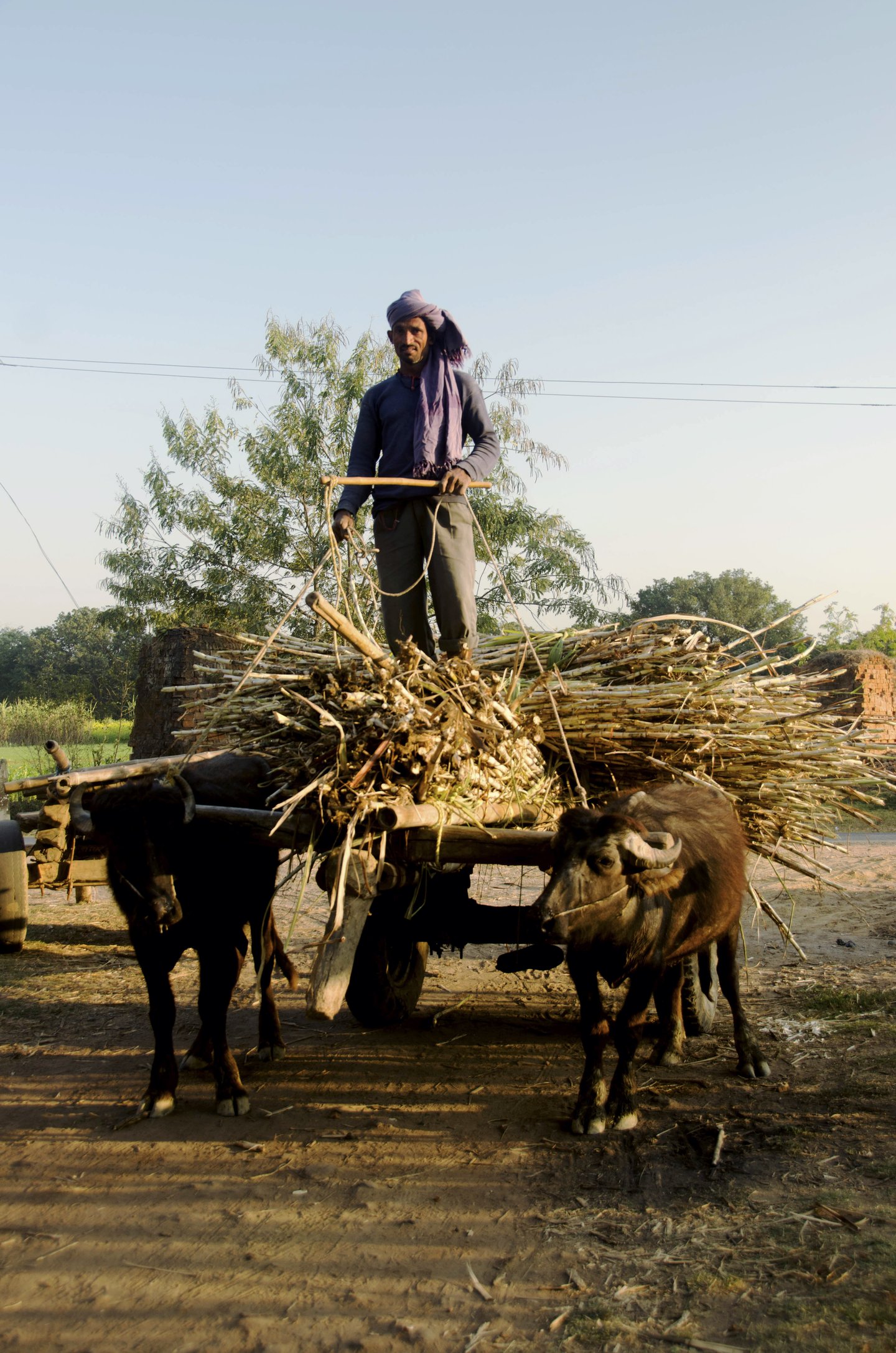
It is evening and nearly time for the mill to close. Subhash Yadav, 38, from Baja, uses his bullock cart to bring the last lot of sugarcane for the day from the nearby fields. “I have been doing this transport work for years,” he says
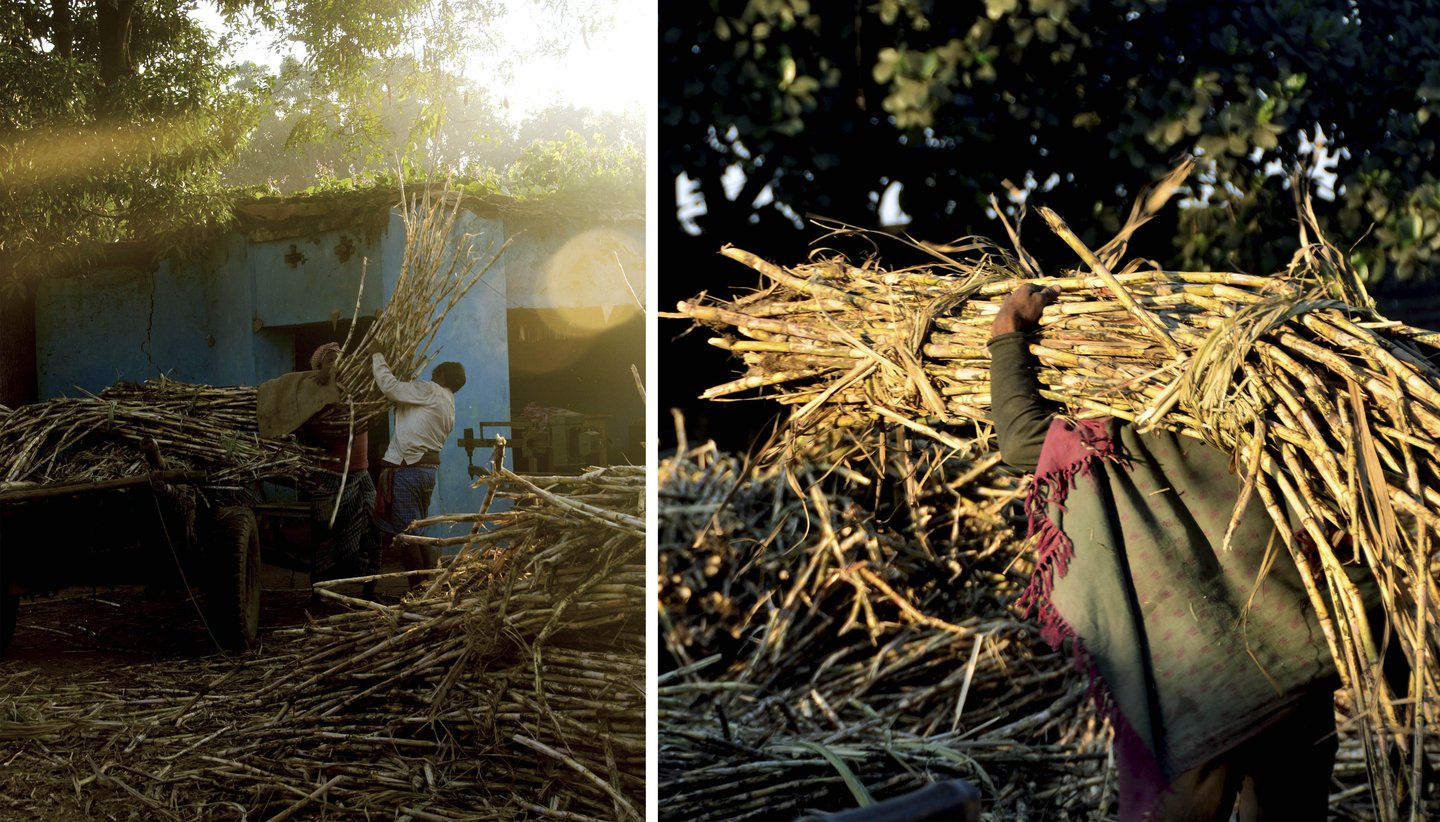
The men waiting in the mill for the cart to arrive swiftly unload the sugarcane in the compound. They will complete this task and return to their villages
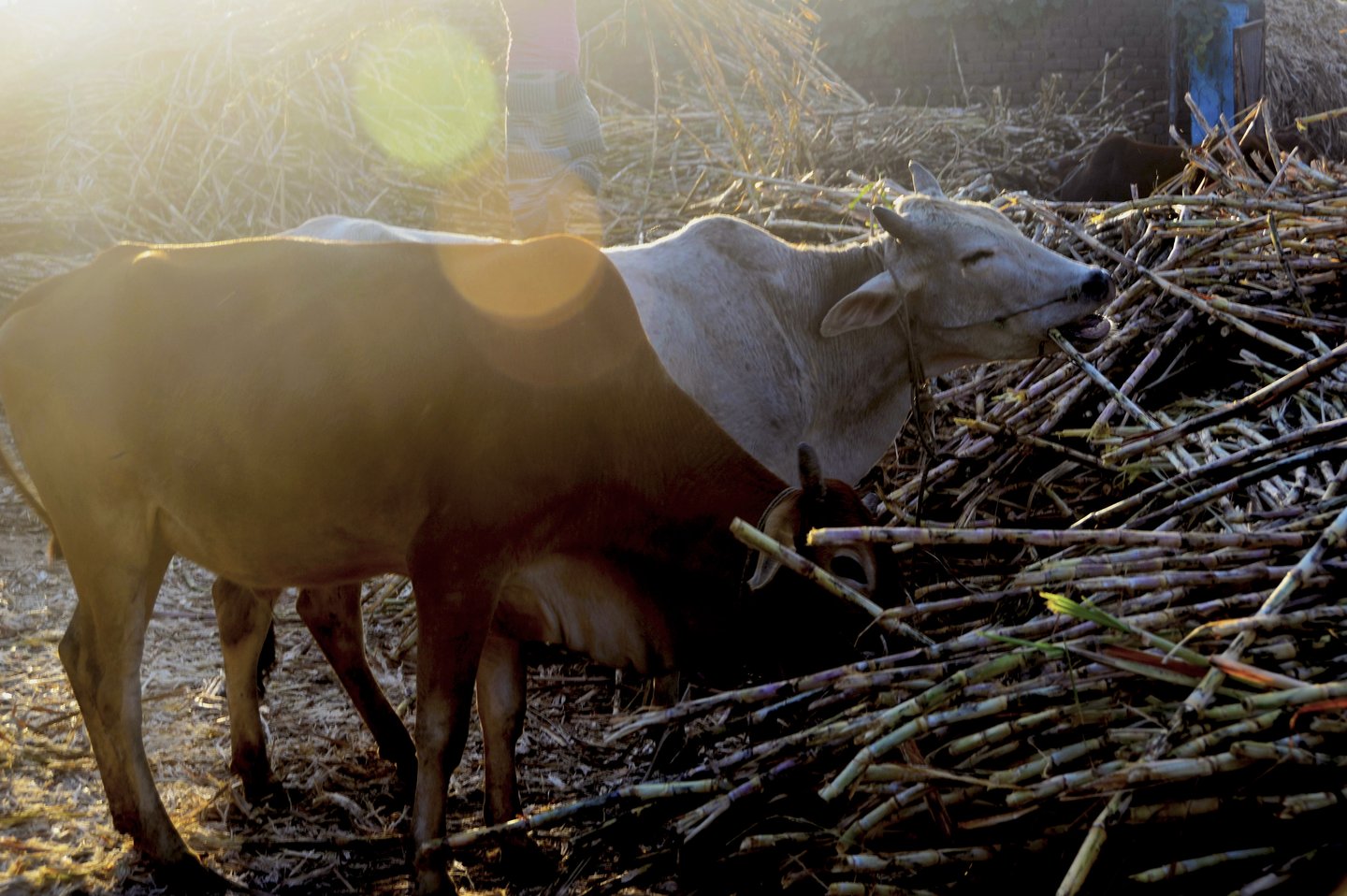
Meanwhile, two cows blissfully chew on the juicy cane. The animals belong to the mill owner – so they are allowed such liberties
